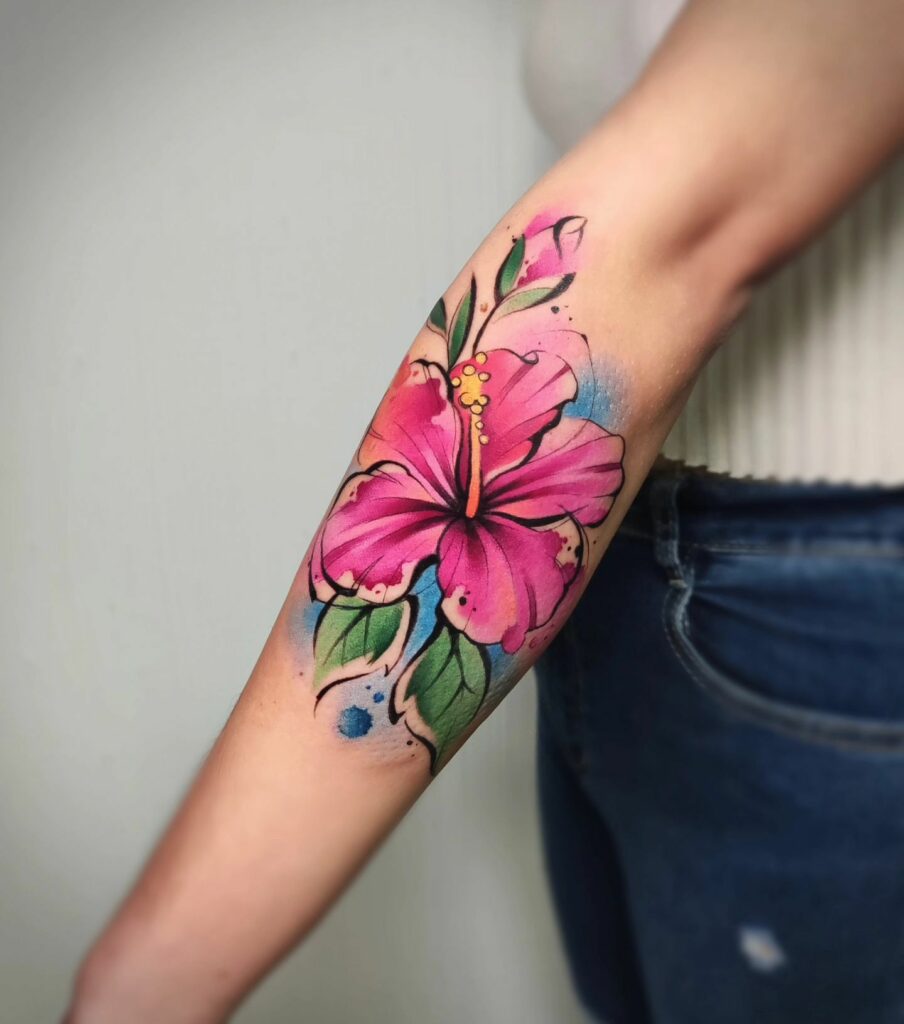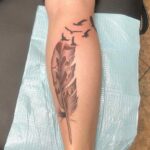Table of Contents
Hello, ink enthusiasts and the ink-curious alike! This is Tori, your go-to tattoo connoisseur, welcoming you to another inked adventure. Today, we’re delving deep into the realm of tattoos, peeling back the layers of history, culture, and, yes, the occasional eyebrow-raising surprise. In this post, we’re not just scratching the surface but going under the skin (figuratively, of course) to uncover some truly unexpected facts about tattoos.

This art form has a history as vibrant and varied as the designs that grace our bodies. And just when you think you’ve seen it all, there’s always something new to discover, some remarkable tidbit that makes you go, “No way, really?” Get ready to challenge your assumptions and broaden your horizons as we journey through time, across continents, and even into the annals of science and medicine. You’ll come away from this read not only loaded with fascinating tattoo trivia but also with a deeper appreciation of what goes into creating these walking, talking works of art.
So, strap in (in a completely neutral and gender-inclusive way, of course), as we ink out a path to some astounding tattoo truths. It’s time to enrich your tattoo literacy and who knows? Maybe even find that spark of inspiration for your next piece. Buckle up… Wait, no, I said no buckling up. How about this instead: Let’s dive in, shall we?
Can You Guess Them all?
- Tattoos can be done on the eyeballs, injecting ink into the sclera or white part of the eye.
- According to research, tattooed men are considered more attractive to women.
- The most expensive “tattoo” ever made was created using diamonds.
- The oldest evidence of tattoos dates back over 5,000 years and was found on Ötzi, a mummy discovered in the Italian Alps.
- New Zealand holds the record for the most tattooed country, largely due to the Māori population and their tradition of Polynesian tattoos.
- The first-ever tattoo shop was established in New York by a German immigrant named Martin Hildebrandt in 1846.
- The oldest person to get their first tattoo was a British man named Jack Reynolds, who was 104 years old.
- Some people choose to donate their tattooed skin to museums after they pass away.
- The word “tattoo” comes from the Samoan word “tatau,” imitating the tapping sound of traditional tattooing tools.
- In Russian prisons, inmates would create tattoo ink using urine and soot when other materials were unavailable.
- Tattoos were used as a form of punishment by the Roman emperor Caligula.
- Mattel released a tattooed Barbie in collaboration with Harley Davidson, as well as a Totally Stylin’ Tattoos Barbie with tattoo stickers.
- Tattoo artists can create hyperrealistic 3D nipple tattoos for breast cancer survivors after reconstruction surgery.
- The most tattooed man in the world, Lucky Diamond Rich from New Zealand, has over 200% ink coverage.
- In Maori culture, tattoos served as a symbol of status, skills, and lineage.
- Getting tattoos on the head and hands can be particularly painful due to the high number of nerve endings.
- Tattoo needles can vibrate up to 3,000 times per minute while injecting the ink.
- The longest tattoo session on record lasted 60 hours and 30 minutes, achieved by Russian tattoo artist Aleksandr Pakostin.
- Black ink is easier to remove with laser tattoo removal than lighter colors like yellow or purple.
- It takes 2-3 weeks for the outer layer of skin to heal after getting a tattoo, while the deeper layers may take up to 6 months to fully recover.
- The art of tattooing is called “Dermatography.”
- The world’s largest tattoo convention is the “London Tattoo Convention” held annually.
- The world’s most tattooed woman is Julia Gnuse, also known as the “Illustrated Lady,” with 95% of her body covered in tattoos.
- Henna tattoos, also known as mehndi, are temporary tattoos made from a natural dye.
- In Japan, tattoos have long been associated with the yakuza (organized crime syndicates) and are often stigmatized in society.
- The art of tattooing has been depicted in ancient Egyptian, Greek, and Roman artworks.
- The first electric tattoo machine was patented by Samuel O’Reilly in 1891.
- Temporary tattoos were first introduced in the early 20th century and were often included in bubble gum wrappers.
- The fear of needles is known as “trypanophobia,” which can make getting a tattoo a challenging experience for some.
- The art of hand-poking tattoos, known as “stick and poke,” has been practiced for thousands of years.
- The red pigment used in tattoos often comes from cinnabar, a mercury-based mineral.
- UV tattoos, also known as blacklight tattoos, are only visible under ultraviolet light.
- The Guinness World Record for the most tattoos given in 24 hours by a single person is 801 tattoos.
- Some tattoo artists specialize in intricate designs called “micro tattoos,” which are tiny and highly detailed.
- The art of tattooing is regulated in many countries to ensure hygiene and safety standards are met.
- In some cultures, such as the Maori of New Zealand, facial tattoos known as “moko” are seen as a sacred and culturally significant form of body art.
- The popularity of watercolor tattoos has grown in recent years, characterized by vibrant and abstract designs that resemble watercolor paintings.
- The process of tattoo removal is known as “laser tattoo removal.”
- Tattooing is prohibited in some countries due to cultural, religious, or legal reasons.
- The process of getting a white ink tattoo can be more challenging, as the ink is often more difficult to see during the tattooing process.
- The skin on the palms of the hands and the soles of the feet cannot hold tattoo ink effectively.
- The use of numbing creams or sprays can help reduce the pain experienced during the tattooing process.
- The art of tattooing has been practiced in Indigenous cultures around the world for centuries, often holding deep spiritual and symbolic meanings.
- The healing process of a tattoo involves the formation of a scab, peeling, and the gradual settling of the ink into the skin.
- White ink tattoos, which are made entirely using white ink, can create a subtle and unique effect on the skin.
- The art of tattooing is called “Tebori” in traditional Japanese tattooing, which involves hand-poking the design into the skin.
- Tattoo artists may specialize in different styles, such as realism, traditional, neo-traditional, tribal, or watercolor.
- The practice of cosmetic tattooing, also known as permanent makeup, involves enhancing features such as eyebrows, lips, and eyeliner with tattooing techniques.
- Tattoo ink is typically made from a combination of pigments, distilled water, glycerin, and alcohol.
- Tattoos can fade over time due to exposure to sunlight, aging, and the natural regeneration of skin cells.
Conclusion
Navigating the world of tattoos can be like an adventure in a colorful, expressive wonderland. There’s a universe of captivating facts, rich histories, and unexpected trends out there to explore, from the first pioneers in New York to the remarkable capabilities of modern tattoo artists. As a tattoo professional, I can’t stress enough the importance of knowing your body’s limits, understanding the healing process, and considering any potential removal before you get inked. Remember, every piece of ink is not just an aesthetic choice, but a piece of art that tells your story. Let’s continue to respect and celebrate this wonderful form of self-expression. Stay curious, stay informed, and let your journey in the world of tattoos be as unique as the artwork itself. Happy inking, everyone!
Feature Image Photo By ringthebellhk on Instagram




